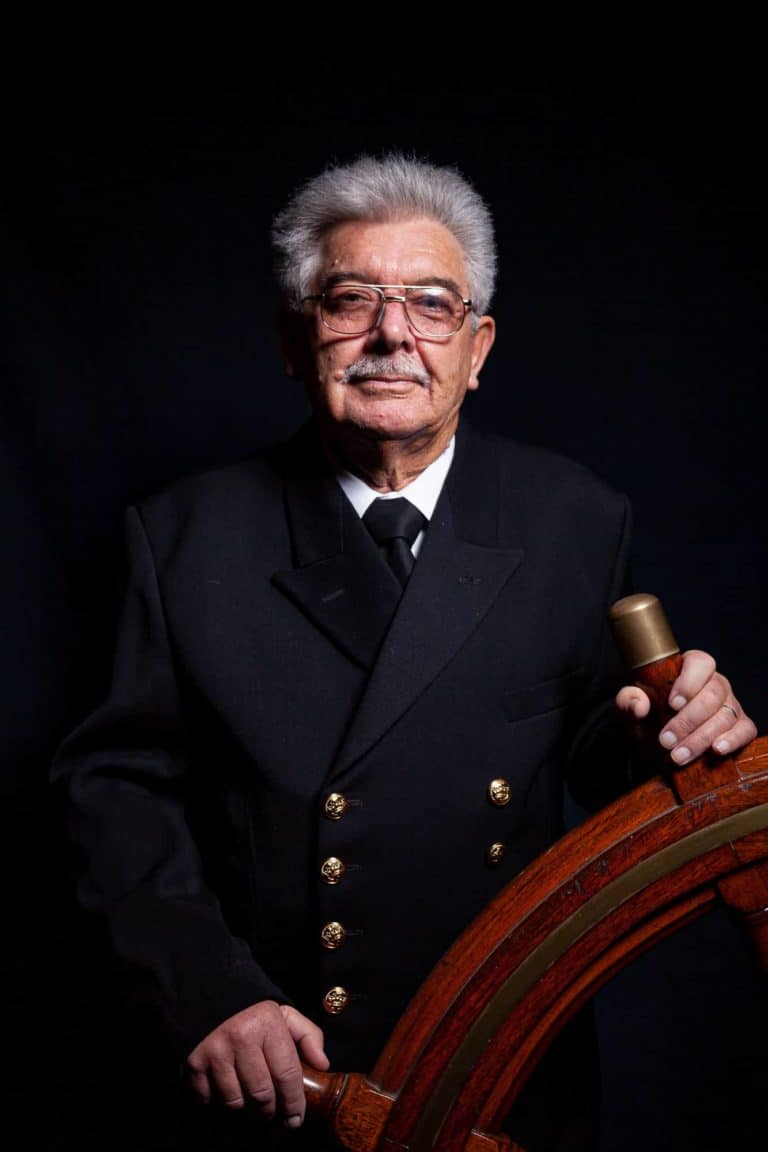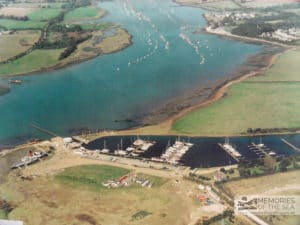Wayne Pritchett on Rivers and Harbours
Lisa: Does the Harbour Master have his own vessel?
Yes, well of course in the early days, I mean all they had were blessed rowing boats, nothing else at all, and then when Vic Sheath took over, he took over October 1970, Bill Huxley had died in June ’70 and poor old Bill they found him dead, and then one of the guys temporarily took over for three months, got paid some money to look after the show and then Vic Sheath was appointed. Well because as I said he was involved with the Sailing Clubs at Cowes and that, or Gurnard.
Vic being a boating man you see, and having a little bit of influence on the Councillors and he knew if he had a word with perhaps the ear of the Public Works Chairman or the Harbour Sub-Committee Chairman, he said, “We definitely need a boat because were struggling to create moorings down the Folly and you can’t expect us, if there’s a boat in trouble, you can’t expect us to keep driving down the Folly in a car and rowing out in a rowing boat, and look at the money we’re bringing in from these moorings at the Folly.”
And they said, “Well that makes sense, yeah” so they bought this ex-Naval Cutter which is not so grand as what it sounded. It was a blessed old wooden thing which was always leaking and we had that and of course that was moored at Newport but of course, don’t forget if you’re moored at Newport and you want to get to the Folly, you got to get out about three hours either side of tide otherwise you won’t get out of Newport. She’ll come afloat about three hours before, you’ve got six hours to get to Folly and back, which is usually plenty of time to do some work down there.
So, we had that boat and of course towards the end, after Vic went, I suppose I was pushing that boat to its limits. I remember one night, there was a Dredger called the ‘DCI Parell, the biggest boat ever to come up to Newport with ballast. An ex-tank landing craft, 195 feet long and she come up at night, only just out of the water where she was heavily loaded, and she glided up there in the night, you wouldn’t see her coming.
That’s what happened to two young fishermen some years ago, she came up above the Floating Bridge and they had a net across the river up by Kingston, they never heard that boat coming because she had very quiet engines and if you look back towards Cowes, all you could see was the back crop of lights, and of course by the time they saw her navigation lights, those navigation lights were on the wheelhouse. Well, that’s 195 foot back. By the time they’d seen those lights, the boat went right through their nets, pulled one of these lads in, wrapped ‘em round the neck and drowned him. Yeah, I remember that night.
And one night she came up there and I had a phone call from someone who said, “Would I go down to the ‘DCI Parell’ is stuck in the middle of the river. It will never get to Newport” and they said, “He wants to go back down to the Cement Mills.”
Well I goes down there with our launch and spoke to the Captain, he was a funny sort of guy, I didn’t get on with him anyhow, and, “Oh, you’ve got to move some more mud out of this river, I’ll never get up there.” I said, “It’s not a case of that Pat” I said, I said, ”you’ve got to have the vessel to fit the river, not the other way about. We can’t deepen the river to fit and accommodate every boat. You’re loading the ship down too much. You’ve been coming here for five years. You know on this tide you’ll never get to Newport with that amount of material in.”
He didn’t like what I said. He said, “Anyhow, can you tow us back down the Cement Mills?” He couldn’t turn round, so I had to tow him backwards, so as I towed him backwards … you see once you get a boat moving, you don’t need a lot to keep it moving on the water, but every now and again as I moved her, she sheared that way and there was no communication, no radio or nothing.
And every now and again I would slacken my tow line and he had to go ahead to straighten her up. It took me two and a half hours to get down to the Cement Mills that night. Three o’clock in the morning I got him alongside. I was on my own and of course my engine was getting hot on that boat and the towing post was nearly pulled out of the boat, he’s 195 foot long. This launch is only a 28-foot wooden boat.
And coming back up the river by the Rowing Club, the engine cut out dead, and I thought myself … there I was three o’clock in the morning, the engine stopped. I thought, what the hell am I going to do?
And it was some years later I thought to myself, this is odd because of all the fatalities in the river, the majority of them seem to appear in an area like Dodnor. From Newport Rowing Club down as far as the Folly and I thought there are so many things happen there, suicides in particular. There’s even the famous 1928 Dodnor murder which is well documented in the County Press.
So, all these events happened, and people was found dead floating in the river, and that night at three o’clock on a winter’s night, the engine stopped, and I thought to myself, am I next?
Everything went quiet and I thought I’m here on my own, I thought I’m in Dodnor but after a while the boat … I let the boat float about on its own, the tide wasn’t doing much and the bloody engine started again and I got home, but for a second I wondered about that.
Lisa: So, what happened to your old launch then?
Well, the old launch got worse and worse and of course I worked it too hard really ‘cos I mean towing these Dredgers about was what done it and she sank several times. I sank her several times up at Newport.
We kept patching her up and patching her up and then when we were Medina Borough Council, we had a guy called Gerry Walker, he was probably the best Manager I ever had. He lives along Cowes Front now in that house called ‘Landfall’, right along Gurnard on the front there.
And he was a yachtsman and he said, “I’ll see if we can get a new boat for you Wayne.” I didn’t think there was much chance of that and in 1987, that’s when I had the slipped disc, we had a 25-foot boat built in that shed called East Quays, up at the Sloop Inn on Wootton Bridge.
There was a guy called Ivor Verlander, he was building boats there, not many, and he built us that boat brand new. Of course, I was recovering from this slipped disc.
I’ll always remember, they wanted me to bring it back to Newport of course and I remember I caught the bus, nobody took me down there, I caught the bus to the Sloop Inn at Wootton and I went and picked up the boat and I drove the boat out of Wootton Creek all the way around Osborne Bay back to Newport.
That was May ’87 and that’s the same boat we got now.







